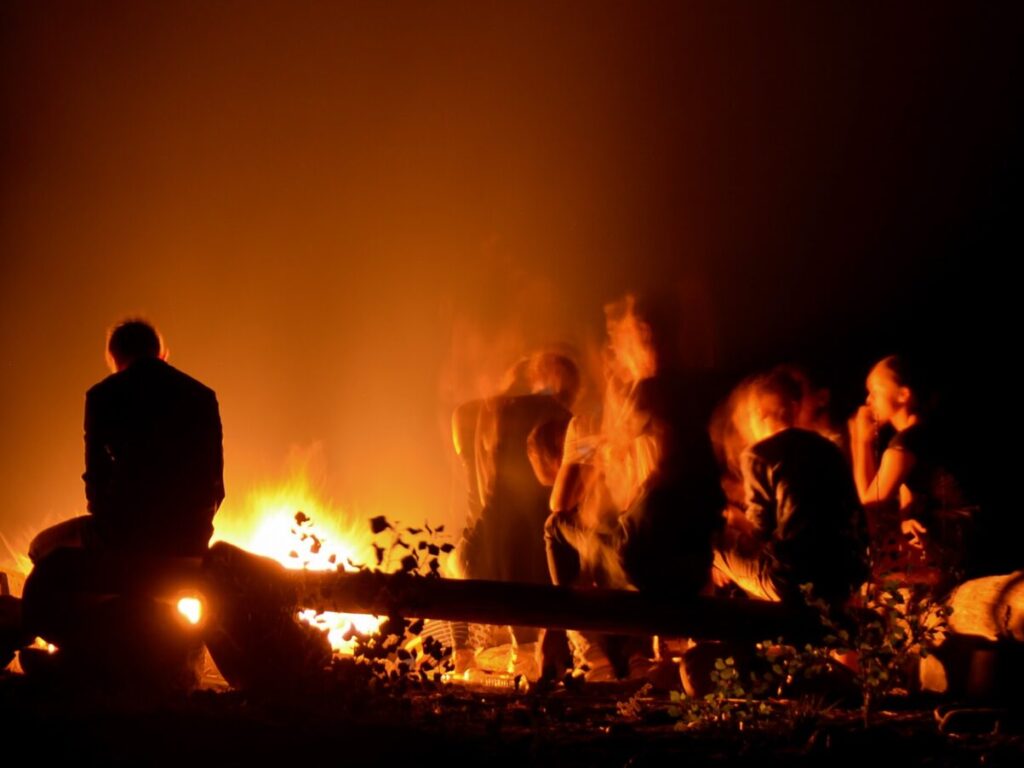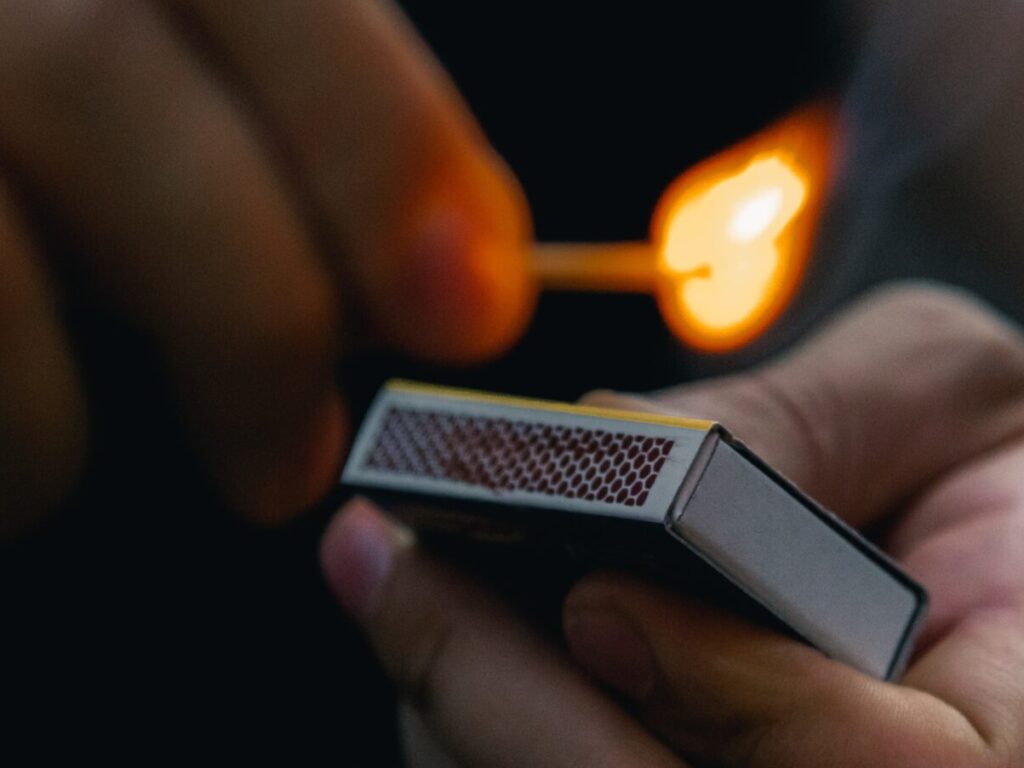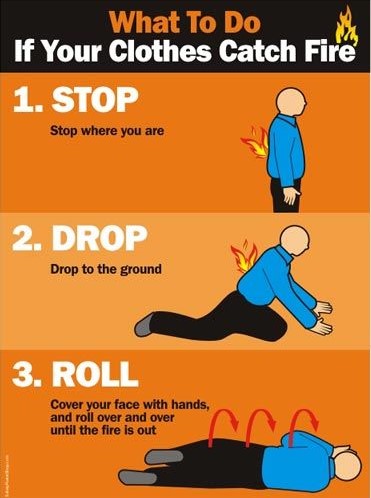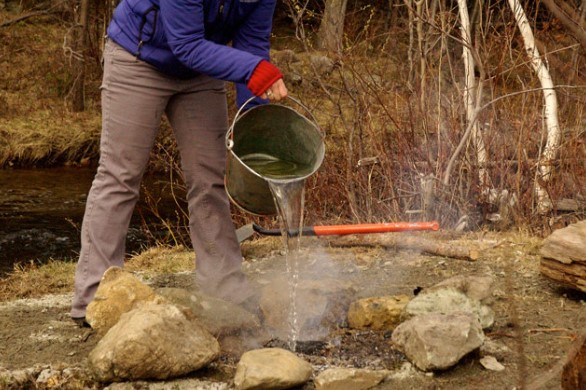Campfire safety
Campfires are a vital part of the camping experience and so is being safe. This 5 minute read will give you the tools to practice campfire safety skills.
There is nothing quite like sitting around a fire chatting with friends and family, singing songs and toasting marshmallows after a day’s camping activities.
Campfire safety is important for the safety of both the people in your group, the other campers on the site and the environment.

The first thing to remember for campfire safety…
Be sure to check that your campsite allows fires before you leave!
Lots of campsites actually don’t permit people to have fires and you don’t want the disappointment of finding this out when you arrive.
You could also check whether the campsite has fire pits, which make setting up a safe fire a lot easier. Lots will only allow you to have fires in fire pits to protect their site.
Many will sell firewood in the campsite, but if they don’t, a nearby garage or supermarket is your next option.
Setting up your fire
If your campsite doesn’t have a firepit, then you could make your own. But, you must check that the campsite allows campfires and are ok where you put your fire. Where you set up your campfire is important and safety in a large consideration.
Set up the fire on bare earth, within a circle of stones, at least 10 feet away from any tents or bushes. If you’re camping in a forest you also want to make sure there aren’t any low lying branches immediately above the spot you’re making the fire. If there aren’t any rocks available, then you could also contain the fire within greenwood that you wet down regularly.

Campfire safety: Time to burn…
Now that you have a good firepit, it’s time to actually make the fire. If you’d like a step-by-step guide go to How to light a campfire.
When you’re getting wood for your fire, make sure not to cut any down from forests, unless you have permission from the landowner that you’re allowed to do so. Not only can this damage wildlife habitats, but green wood is also not ideal for making fires as it doesn’t burn well. It will get very smokey and not much fun.
Lighting the fire safely
If you’re using a match to light the fire, make sure you throw it into the fire once it has caught light, or put it into a container of water to make sure it goes out.
When you’re camping in summer or autumn, there’s lots of dry grass around that can easily set light.
You should also never use lighter fluid, gas or any flammable liquids to start your fire.

To stop escaping flames
Be sure to always keep a bucket of water near in case the fire suddenly needs to be put out, as well as a shovel that be used to throw sand or dirt onto escaping flames.
You also want to pay attention to the wind, as a strong gust can cause sparks to fly or even for the fire to spread. On blowy days, keep anything flammable and any unused firewood upwind and at least 4 meters away from the fire.
Keep an eye on kids and pets
Kids love toasting marshmallows and whittling sticks whilst sitting around the campfire.
But another important part of camping is teaching children how to be safe around the fire. You could make the fire with your kids, showing them how it can be done safely, and then teach them how to maintain it responsibly.
Teach them to stop, drop and roll if they ever find themselves in a situation when their clothes set on fire.
In some countries such as Australia and USA, they teach the stop, drop, roll as part of the school curriculum. Its a good idea to practice this with young children as make it part of their learning to camp rules.
If they ever needed to do this, they wouldn’t panic and just carry out these 3 steps more naturally.

If you’re camping with pets that you know can be jumpy or unpredictable then be sure to keep them on your lap or by your side around the campfire. You could also keep them on a short leash.
Set rules that work for your family and the ages of children you have.
When we were younger, we had a rule that sticks poked in the fire had to stay below knee height to avoid red hot pokers being waved in the air around faces and eyes.
We also had a rule of no running around the fire, so children and adults moving around the campfire had to do it outside of the ring of chairs to avoid anyone tripping too close to the fire.
Make sure all the children and adults in your party know the fire rules, especially if they haven’t camped with fires before.
Don’t leave the campfire alone!
Make sure to never leave a campfire unattended, as a breeze can cause it to spread very quickly.
Even if you’re heading off for a short trip, make sure anyone left at the camp knows to keep an eye on the fire. Or, if no one will be around then properly extinguish the fire- it can easily be relit when you return.
Putting out campfires
To put the fire out properly, dump water on it, then stir the ashes around to expose any embers that are still burning and finally dump more water on the fire.
A good rule of thumb is that if it is too hot to touch then the fire shouldn’t be left alone.

If you follow the guidance in this blog, then you should be able to enjoy your campfire without endangering anyone, or your environment.
For loads of ideas on what to do around the fire, and stories you can tell, check out my general discussions and Stories around the campfire.
The last thing to remember is to have fun around the fire once it’s lit!
Here’s me signing out and thank you so much for reading.
Lily Crooke / Environmental and Recreational author
